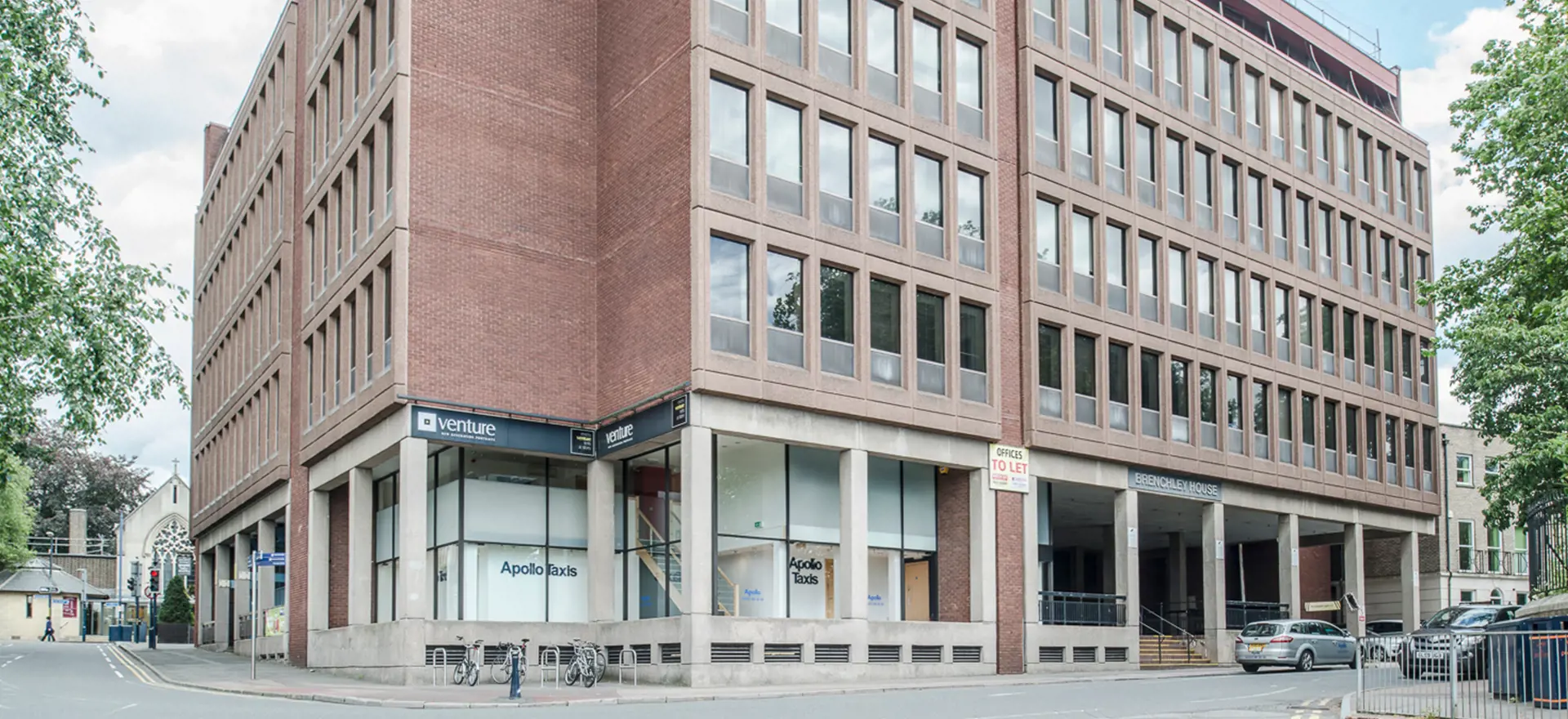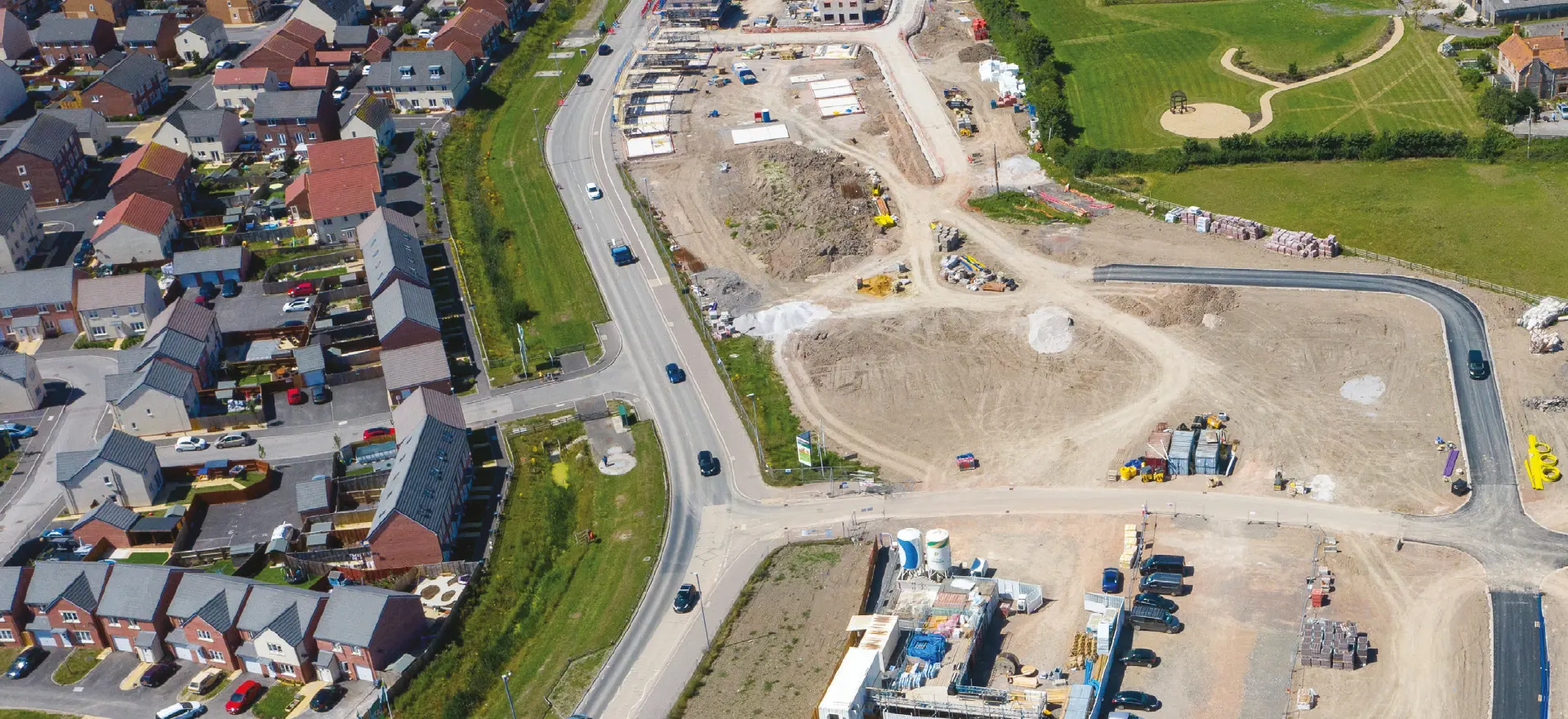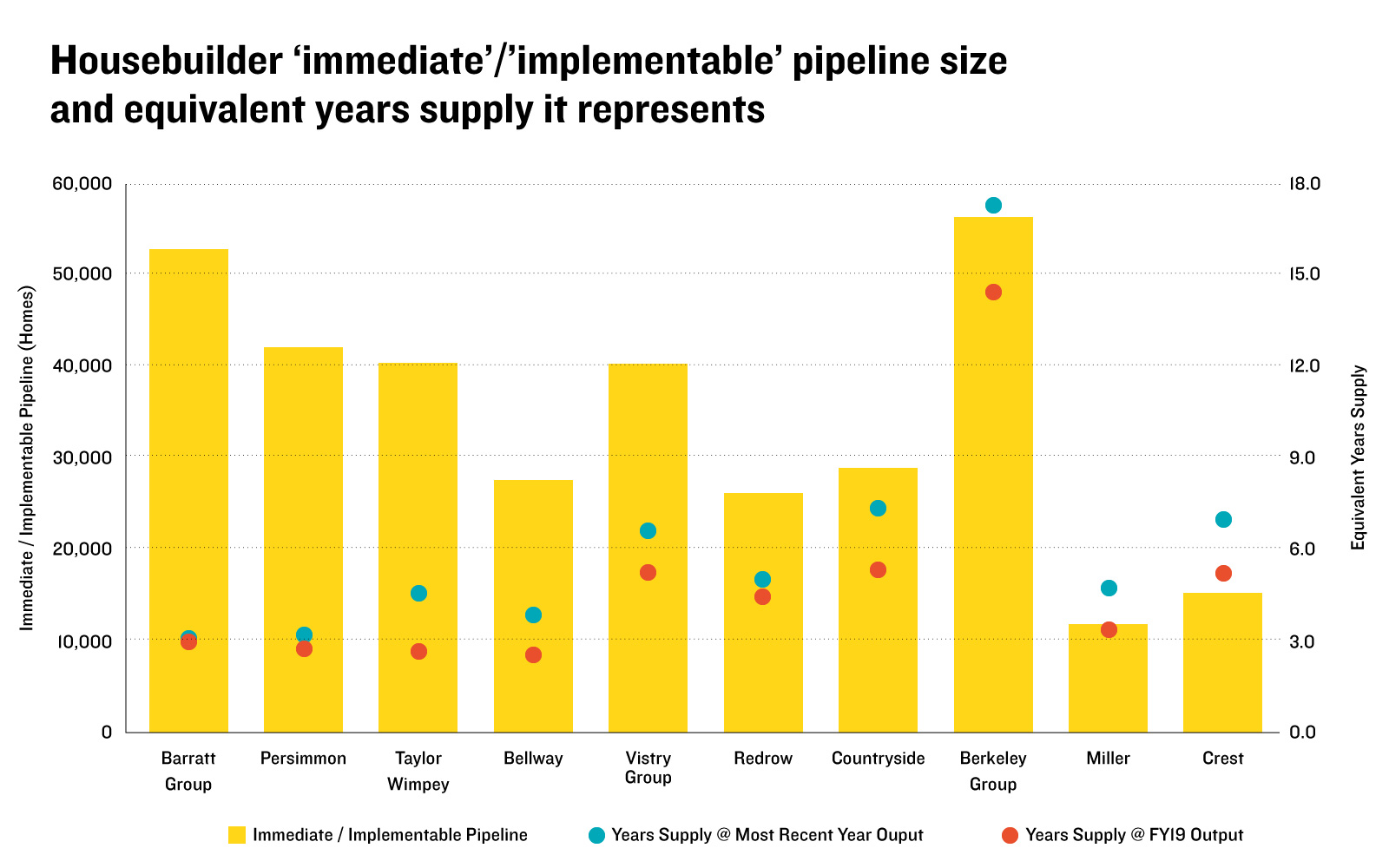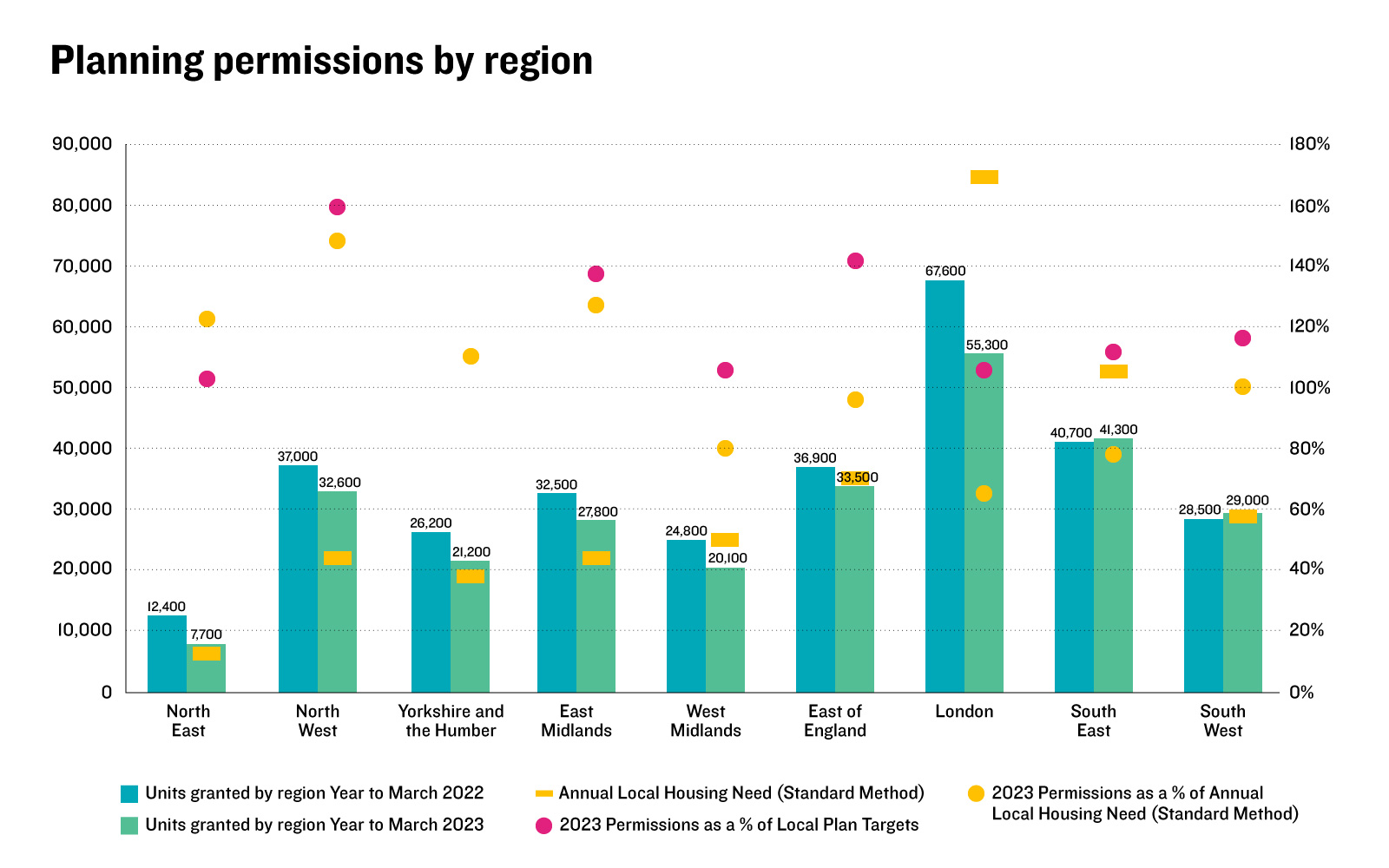The Government has launched a further permitted development right (PDR) consultation.
This blog does not discuss the proposals for agriculture related PDRs which are numerous and might, at least in part, be dubbed Clarkson’s clauses; following on from the
cutting red tape proposals announced after the UK Farm to Fork summit at 10 Downing Street. These PDRs were announced at the summit and trailed again in June’s
Unleashing rural opportunity. They seek to respond to perceived rural economy planning barriers, including those presented as in the television programme Clarkson’s Farm. See
Dan Lampard’s blog for more analysis of a recent planning appeal at that site.
Design Codes – Prior Approval
The consultation sets out proposals that would introduce compliance with design codes as a prior approval consideration for certain types of permitted development, where they have been locally adopted. Local design codes could replace the current design and external appearance considerations within prior approvals so that schemes could be assessed to determine whether they meet the local design code requirements rather than referring to national policy. The rationale behind this is to reduce uncertainty when assessing the design of applications and to reduce variation in the interpretation of design criteria.
The idea of regulating the use of design codes for assessing prior approval applications is not new. The
‘Planning for the Future: planning policy changes in England in 2020 and future reforms’ White Paper proposed a fast track for beauty and said:
[..] we also propose to legislate to widen and change the nature of permitted development, so that it enables popular and replicable forms of development to be approved easily and quickly, helping to support ‘gentle intensification’ of our towns and cities, but in accordance with important design principles.
The proposals brought forward in this consultation reflect the ideas initially proposed in the White Paper. It appears that local planning authorities who do not have an adopted design code will continue to look to national policy. Will the PDR schemes that require consideration of design come under more or less scrutiny in the absence of a design code? The level of detail required for submission could also vary depending on the requirements set out in a design code which would (quite deliberately) lead to inconsistencies across LPAs. The proposals will be welcomed by developers if they improve efficiency and consistency in the decision-making process, but it seems unlikely that this will be the case.
Changes to Town Centre and Commercial PDRs
Fawlty towers to healthy homes?
The Government is proposing to allow the change of use of hotels, boarding houses or guest houses (in the C1 Hotels use class) to dwellinghouses through permitted development rights. It is proposed in this consultation that this could either be achieved through an expansion to the Commercial, Business and Service uses to dwellinghouse PDR (Class MA of Part 3) or through the creation of a new right. It is noteworthy that that the former option has been proposed, as hotel uses (C1) do not fall under the commercial, business and service definition.
It is acknowledged in the consultation that hotels and guest houses play an important role in the tourism industry, helping to stimulate economic activity and drive footfall in their localities. However, the Government argues that in areas of high housing need, these buildings may better serve their local communities if repurposed as housing.
The Government is already reviewing the ease with which dwellings can become tourist accommodation and consulted on the creation of a
new use class for short term lets in April earlier this year – see
Alexandra Gavin’s blog.
This consultation poses the question of whether there are any safeguards or specific matters that should be considered for this new PDR. In order to offset this potential impact on local tourism, it is proposed as part of this consultation to allow for local consideration of the impacts the change of use could have on the local tourism economy. It may also be the case that a “different” size limit on the amount of floorspace changing use should apply (presumably this refers to the option to expand the Class MA of Part 3 right, as no floorspace limit for this new right is found within the consultation).
The homes created under the new right would then be limited to use as a C3 dwellinghouse, and would not benefit from PDRs to change use to a small House in Multiple Occupation, or to the proposed use class for short term lets.
This move tallies with the overall aspirations of the Government to drive development within existing centres via densification and brownfield sites, rather than building outwards.
This proposed C1 to C3 PDR raises the question of the type of accommodation that would be provided as a result; the typical layout and facilities offered within many hotel buildings is reminiscent of a co-living or Purpose-Built Student Accommodation offer. Although, with many facilities already in place, such as communal areas and large kitchens, this may present a more viable option for retrofitting existing spaces than other commercial buildings.
The reuse of hotels for residential use may make some contribution to housing supply and regenerate some sites in town centres (and elsewhere) but it is unlikely to be significant or that wouldn’t have happened anyway. Nevertheless, it should be generally welcomed, subject to the concerns over quality that will inevitably follow.
The Government will need to strike a balance between protecting and supporting the local visitor economy whilst promoting the availability and affordability of housing stock and the vitality of local communities.
Amendments to Class MA – a total eclipse of the PDR heart?
The Government is asking whether significant changes should be made to the commercial to residential (Class MA) PDR.
Class MA was one of the proposals that responded to the need for amendments to permitted development rights, following the September 2020 abolition of use classes A1-A5, B1, D1 and D2, the introduction of new classes E, F.1 and F.2 and the movement of further uses outside of a use class (sui generis). The class MA PDR was consulted on from 3 December 2020 to 28 January 2021: “
Supporting housing delivery and public service infrastructure” (‘the December 2020 consultation’).
All of the Class MA proposals that form part of this current consultation,
had been either rejected or introduced as an outcome of that 2020 consultation (see Table 1 below).
The current consultation asks whether Class MA PD right should:
-
Have no floorspace cap, limit it to 3000sqm, or retain it at 1,500sqm?
-
Have no period of vacancy required prior to the prior approval application being submitted?
-
Apply on all Article 2(3) land
[1] (e.g. conservation areas) but not World Heritage Sites?
-
Require consideration of the “character or sustainability of the conservation area” for ground floor level proposals
It is interesting that the Government is revisiting these matters, perhaps to explore whether fears have been realised, or whether there is in fact scope to provide more flexibility.
The vacancy requirement arose from public consultation responses to the 2020 consultation. The Government says that it would like to remove this requirement, because: “The existing permitted development right requires that the premises be vacant for a continuous period of at least 3 months immediately prior to the date of the application for prior approval. This was introduced to safeguard against businesses being displaced. However, we believe the requirement may be ineffective and could result in property being left vacant for longer periods. In order to provide greater flexibility for owners, enable more premises to change use, and therefore to deliver additional homes, it is proposed that this vacancy requirement is removed”.
Where a proposal lies in a conservation area and involves a change of use of the whole or part of the ground floor, Class MA prior approval applications are subject to an additional matter. The decision maker must consider the “character or sustainability of the conservation area”. The Government would like to remove this matter, noting that it is unique to this PDR and does not relate to the consideration of physical works. This logical argument was made in 2020, but rejected. Perhaps because there was simply too much change perceived to be happening at once and fear surrounding the successful implementation of local plan policy following the introduction of Class E and a new wide ranging permitted development right? Fear which might has rescinded or must be looked past in order to encourage re-use of buildings.
World Heritage Sites, are sometimes designated for reasons connected to their use, so their exclusion from the PDR is as logical as the inclusion of conservation areas.
The Government is alive to the potential impact of these Class MA amendments and is asking if they might affect businesses, local planning authorities and/or communities. Critically, the consultation also asks “Do you think that changes to Class MA will lead to the delivery of new homes that would not have been brought forward under a planning application?”. This nods to the complexity of this type of prior approval application and to the complexity of planning applications and the obligations arising from the permissions that follow. Are Class MA PDRs simply providing an alternative way through an onerous system, rather than simply ensuring that development with few or no impacts can proceed easily? For the experts it will be the latter, and for others they will need to employ an expert to advise them on what their options are.
Table 1 comparison of December 2020 and July 2023 PDR consultation questions
Expansion of PD for sui generis shops and services to residential
A smaller slice of PD for uses outside of Class E?
PDRs that allow change of use from betting office, pay day loan shop, hot food take-away/pay day loan shop/betting office/launderette/amusement arcade or a casino to residential PDRs are currently capped at 150sqm of conversion floorspace. This may mean that only part of the available floorspace may be converted without express planning permission via these Class M/N PDRs.
The Government proposes to double this to floorspace limit to 300sqm or to remove the cap altogether.
It is also proposed that instead of requiring buildings to have been in the relevant use from dates many years ago, when each PDR was announced, there would be a rolling requirement for the building to fall within the given use during the two years before seeking approval for conversion.
Furthermore, Class M and N PDRs are to be permitted on all Article 2(3) land except World Heritage Sites, as with Class MA PDRs.
Scrubbing away the launderette to residential PDR
In 2015,
Lichfields questioned the wisdom behind then proposed launderette to residential PDR. Noting that launderettes are already in decline, converted launderettes would create small dwellings, not everyone owns a washing machine and perhaps most critically, it would make a negligible contribution to meeting housing needs, with potentially adverse consequences.
Seven years after its introduction, the Government has concluded:
“Launderettes can provide a valuable community service in certain areas”.
Accordingly, this PDR is to be repealed.
PDRs allow for the temporary use of land for any purpose for up to 28 days per calendar year, of which up to 14 days can be used for markets, motor car and motorcycle racing (under Class B of Part 4 of the GPDO). Views are being sought on whether this is amended so that markets can operate for a different number of days, potentially 28 days per calendar year, which would bring it in line with other uses permitted under this PDR. Temporary use for motor car and motorcycle racing would remain limited to 14 days. This tidying up exercise seems sensible.
Extensions to non-residential buildings
Commercial Business and Service use extensions
PDRs permit the extension or alteration to a Commercial, Business and Service establishment, under Part 7 Class A of the General Permitted Development Order (GPDO). Currently, the gross floorspace of the original building cannot increase by 50% or 100 square metres (whichever is less). The consultation proposes providing greater flexibility, so that the current floorspace limit of extensions or alterations is increased from 50% or 100 square metres of floorspace (whichever is less) to 100% or 200 square metres of floorspace (whichever is less). The floorspace thresholds for extensions or alterations on article 2(3) land or a site of special scientific interest will be retained.
Industrial and warehousing extensions
Presently, PDRs (Part 7, Class H of the GPDO) allow for the erection, extension or alteration of an industrial building (Use Class B2) or warehouse (Use Class B8). The consultation proposes that the current floorspace threshold of new buildings permitted under the right in non-protected areas should be increased from 200 square metres to 400 square metres (other limitations remain). These changes would not apply to new buildings on article 2(3) land or a site of special scientific interest.
It is also being proposed to increase the floorspace threshold for existing warehouses and industrial buildings. In non-protected areas it is proposed to increase floorspace thresholds from 1,000 square metres of floorspace or a 50% increase over the original building (whichever is less) to 1,500 square metres of floorspace or a 75% increase over the original building (whichever is less). Once again these changes would not apply to buildings on article 2(3) land or a site of special scientific interest and height restrictions and other limitations remain.
Open prisons to benefit from closed prison PDRs
Part 7 Class M of the GPDO allows for certain “extensions etc for schools, colleges, universities and hospitals”. This was amended in 2021 to increase the threshold for the amount of new floorspace permitted and to change the height limitation, while also allowing closed prisons to benefit from the right, alongside education providers and hospitals.
Since 2021, buildings benefiting from Part 7 Class M have been allowed to expand their facilities significantly - by up to 25% of the footprint of the current buildings on the site, or by up to 250 square metres, whichever is the greater. See
this Planning Matters blog for more detail.
The proposed changes in this consultation would see Part 7 Class M apply to open prisons as well as prisons with a closed perimeter. It is not proposed to make any changes to the existing limitations.
A nature-based solutions PDR?
Within the consultation there is a call for evidence by the Department for Environment, Food and Rural Affairs (DEFRA), regarding nature-based solutions, farm efficiency projects, and diversification.
Of interest beyond the agricultural sector is the discussion regarding some nature-based solutions need planning permission. Nature based solutions include projects seeking to use, manage, change or restore an area of land to address environmental issues, such as nutrient pollution, flooding, climate change or biodiversity loss. It is noted that use of land for agriculture or forestry does not require planning permission, but associated works, such a flattening the land might. In this context the consultation says:
“Some planning decisions have considered that changes in land use from agriculture to non-agricultural landscapes (such as peatland restoration, sand dune reprofiling and the creation of wetland habitats) have constituted a material change of use that requires planning permission”.
Acknowledging PDRs do not apply to EIA development or development requiring Habitat Regulations assessment, the call for evidence asks, among other things:
“Q.69 Would a specific and focused permitted development right expedite or resolve a specific delivery challenge for nutrient mitigation schemes?
Q.70 Please provide specific case studies (including planning reference numbers where available) which can help us understand what issues farmers and land managers are facing in relation to nature-based solutions.
Q.71 Would these issues be resolved by amending planning practice guidance or permitted development rights, or any other solutions?
Q.74 Do you foresee any unintended negative consequences that may result from more nature-based solutions coming forward (e.g., impacts to other species, flood risk, wildfire risk, risk to public safety, releasing contaminants from contaminated land or hydrology etc.)? How could these be avoided?”
It is encouraging that DEFRA is seeking to smooth the way for nature based solutions, in order that development relying on their implementation can proceed swiftly.
Closing thoughts
This is a wide-ranging consultation and, from a town centres perspective, little trailed.
The revisiting of concerns raised in the past to see if they remain valid is positive provided the Government truly engages with the responses. It is of interest that the questions seek to understand the perspective of the consultation respondent.
The repealing of the launderette to residential PDR and the proposed changes to (encouragement of) other high street PDRs shows the Government turning the PDR taps on and off, or setting them at half flow, trying to balance the planning and associated political impact of the PDRs vs planning permission conundrum, while still being seen to be cutting red tape. Given the relatively limited advantage of the prior approval route to applicants, in some cases due to numerous prior approval matters, it is interesting that this consultation is still trying to get it right. With so many uncertainties around timescales for the determination of planning applications, and the numerous submission requirements to be met, perhaps the background to these new PD proposals lies as much in an acknowledgement of the complexity and risk of planning applications, as it does in a view that there are insufficient planning freedoms to allow the delivery of much needed homes?
The same questions will flow from this consultation as from the last, such as how do the planning obligations, such as affordable housing, apply to large scale conversions?
The Government has asked the key question itself “Do you think that changes to Class MA will lead to the delivery of new homes that would not have been brought forward under a planning application?” And it has anticipated concerns that will inevitably follow about the quality of some of what is provided.
The acknowledgement of the need to support nature-based solutions is good news.
[1] Article 2(3) land is defined as conservation areas, areas of outstanding natural beauty, areas designated under s.41(3) Wildlife and Countryside Act 1981, National Parks, the Broads and World Heritage Sites are Article 2(3) land.







